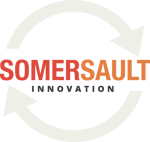Most of us in sales lead with expertise and a “closing energy” rather than a mindset of curiosity. We know our company’s products and services inside and out, and we’re masterful at quickly linking a client’s needs to our solutions. The name for this mental habit is convergent thinking. Most problem solvers in business, which is nearly everyone but especially includes salespeople, love to solve problems and close as quickly as possible. That means inserting your product/solution in at the first opportunity because you can then move on to the next one, en route to hitting your numbers.
In contrast, Design Thinking converts you from being a problem solver—like every other salesperson in the field—into being a problem finder. If you completely understand the bigger problem, you can design the optimal solution. It requires that you enter every interaction with the assumption that you don’t understand the problem.
We created a framework to apply Design Thinking principles to sales, called Sell by Design. In creating the framework for Sell by Design, we’ve kept the three-phase process of Design Thinking—user research, insight generation, and solution experimentation—and overlaid the most basic sales cycle.
Phase 1 Is Discovery — In Which You Learn About the Client, Their Business, and Their Customers
Here’s an example of discovery in action:
A Salesforce AE was struggling to gain traction at a small, neighborhood coffee company called Starbucks. He had done his usual discovery work: website and online searches, 10-Ks, annual reports, and industry analyses. He’s a sharp guy, and he knew he could provide several solutions that would help the company. But he was having no luck getting in the C-suite.
He took our advice to heart, to learn something new and stay curious about his customer—to approach the company like a beginner. He decided simply to visit a Starbucks in the evening, when business would be slower, and talk to a store manager. No agenda. No pitch. He asked her about the joys and difficulties of her job.
After building rapport, he asked one of our favorite questions: “What’s the bane of your existence?” Without hesitation, she pulled out a massive “milk binder” and explained how difficult it is to manage the store’s extensive milk offerings, which included numerous varieties, myriad expiration dates, and specific temperature requirements. We all think of Starbucks as being in the coffee business. Turns out they’re also in the milk business.
Next, he emailed the executive vice president (EVP) of operations to say that he understood the milk binder needed some innovation. He said exactly nothing about Salesforce products. The EVP wrote back immediately, cc’d another executive, and said, “Absolutely! Could you please talk to this guy?”
DISCOVERY TOOLS
Designers—because they purposefully jump into the unknown and seek new perspectives that lead to innovative solutions—have found ways to supercharge their capacity for curiosity. We can, therefore, borrow from Design in order to get better at noticing and discussing interesting things with our clients. The more we start to notice, the more we see, and this leads to bigger, more authentic conversations.
Here are some discovery tools to help you leverage your curiosity and deepen your understanding. The more curious you are, the more powerfully these tools will serve you.
BE THE CUSTOMER
Become a customer of your client. Whether that means applying for a loan or buying a custom-designed T-shirt— engage in the experience of being the end user.
We worked with a sales executive who was selling his house and buying a new one. He worked with the same real estate company for both sides of the transaction and noticed some interesting things. He was later able to share his experience in a business meeting from a customer point of view, because, as it happened, he was also prospecting this real estate company in his own sales process.
SHOW ME
Whenever you can go beyond simply talking about something to actually seeing it, take advantage of that opportunity. If you simply take your client’s or their customer’s word for their experience, you risk missing out on a wealth of opportunity.
Whenever someone mentions a process or tool they use to do their work or accomplish a task, ask them to show it to you. Have them walk you through what they do, step by step, while you ask questions.
Someone might tell you they have an excellent reporting tool with great functionality. Ask them to show it to you. Maybe it’s just an Excel spreadsheet. Unless you ask them to show you, you’ll never know.
DEEP-DIVE INTERVIEW
We’ve saved the most frequently used discovery tool for last. Interviewing is often the most efficient method for gathering information about clients and their customers. It’s especially effective if you’re not able to meet with people in person, as you can still discuss their needs and experiences. The trick is finding a way to meaningfully engage in interviews that are rich in the details you need in order to do great discovery. In effect, you’re using conversation to approximate being the customer or show me.
The best way to do that is to have the person paint vivid images for you with specific stories.
THE DISCOVERY MINDSET
In the discovery phase, our mindset is one of total curiosity—the beginner’s mindset. This helps us get the clearest view into whatever is going on with our client and their customers. Curiosity can help you discover the milk binder. The best salespeople we know get their clients because they dive so deeply. They speak their language, use their abbreviations, sometimes even adopt mannerisms and other cultural nuances when they interact with their clients.
There’s a fair amount of focus in sales today on becoming a trusted adviser. We believe that Selling by Design—doing deep discovery with great curiosity and empathizing with your clients to generate meaningful insights—is a guaranteed path to trusted adviser-ville. What could be more trust building than someone who not only understands your business and your obstacles but also empathizes with what you’re trying to accomplish and why?
SELL BY DESIGN
Connect with us to learn more about our Sell by Design training program for your team.
About the Author:

Ashley Welch is Co-Founder of Somersault Innovation. She has spent her career in sales and now partners with organizations to put the tools and practices of Design Thinking into the hands of sales professionals in order to drive human connection and grow revenue.






